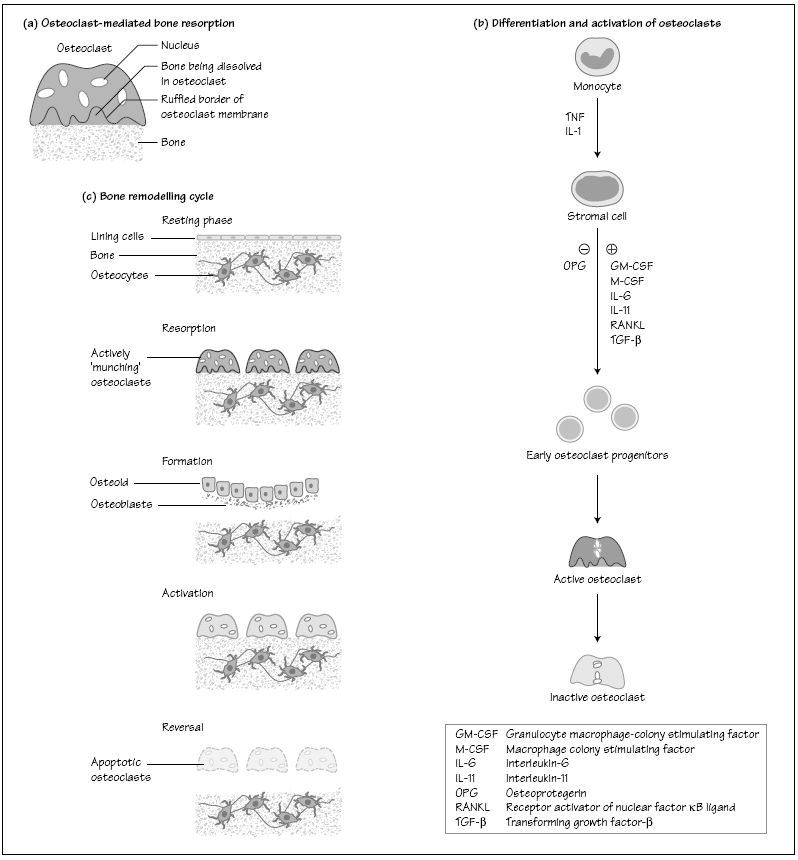
The nature of bone. Bone is an essential rigid support for the body, a means of effecting locomotion and a reservoir of ions such as calcium, phosphate, magnesium and sodium. Bone is two-thirds mineral and the rest is mainly type 1 collagen and water. Bone mineral is present mainly as crystalline hydroxyapatite and the rest as amorphous calcium phosphate, which occurs in higher amounts in actively forming, young bone.
Bone needs to be not only rigid and strong but also light enough to allow muscle contractions. These properties are conferred by the structure of bone, which in the case of cortical tubular bones consists mainly of densely packed layers of mineralized collagen, and, in the case of the axial skeleton, of spongier trabecular or cancellous bone. Defective cortical bone results in long bone fracture, while defective trabecular bone results in vertebral fractures.
Bone matrix is laid down in concentric layers called lamellae. The unit of structure in compact bone is the osteon. In each osteon, lamellae are arranged around the central Haversian canal; the canal houses blood vessels and nerves. The osteocytes are located in the lacunae, which are connected by branching tubules called canaliculi. The canaliculi radiate out from the lacunae to form an extensive network, connecting bone cells to each other and to the blood supply.
The three main cell types in bone are the osteoblast, osteocyte and osteoclast. The osteoblast
Stay updated, free articles. Join our Telegram channel

Full access? Get Clinical Tree







